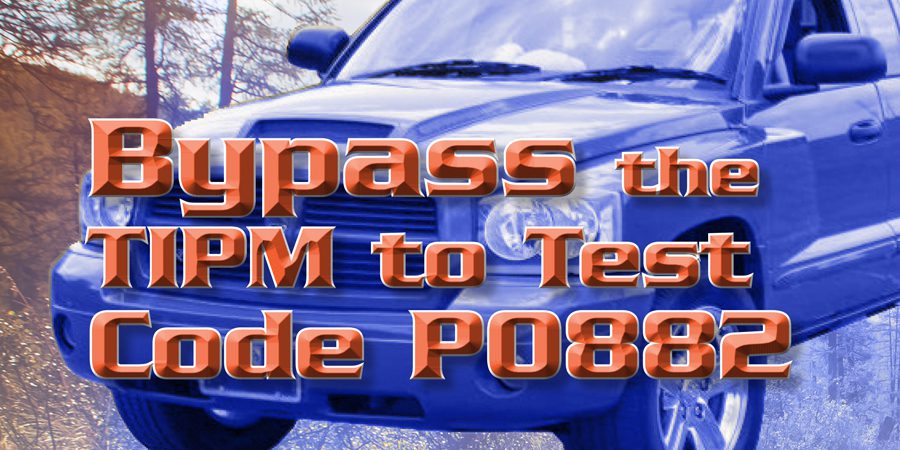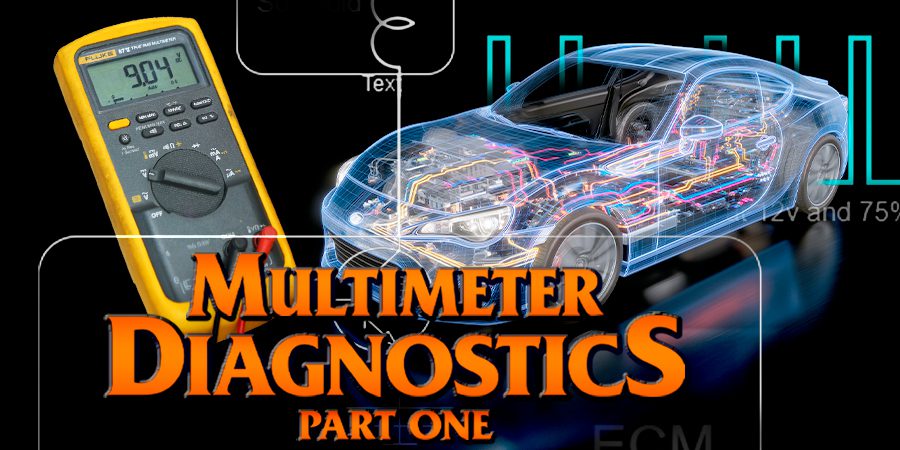In Part I, we covered base oils and their changes over time. Here, we’ll look at the additive packages that make each oil unique.
Additive packages in ATFs deteriorate over time. Severe driving conditions can cause this like, stop and go traffic, personal driving habits, the weather, do you drive in a mountainous area, do you park on an incline, is the fluid level too low or over lled, how loaded is your vehicle, all play a part in how fast an additive package can fade, fallout, or deteriorate over time. OEM claims of “fill for life” (when questions of service frequency for automatic transmissions get asked) are based on driving styles that do not represent the “normal driving” habits of most consumers. When asked about “severe duty,” OEMs will, in general, cut the “normal driving” service interval in half. Most drivers meet the requirements for “severe duty driving” in their daily commute to and from work. DCT and CVT transmissions need even more frequent fluid service to survive modern driving conditions and habits because these fluids become additive-depleted more quickly than step automatics.
Problems with torque converter shudder, along with the use of new frictional materials and multiple clutch plate configurations, also deplete the additives used to control shift quality and prevent shudder and other frictional issues in step automatic transmissions. The solution is changing the fluid or refreshing the additive content to eliminate these types of problems.
As step automatic transmissions have gone from 2 speeds to 10-speeds, ATF has changed right alongside the explosion of OEM proprietary transmission fluids dominating the marketplace. With OEMs driven by government regulations to improve fuel economy by any reasonable means possible, the end result was changing viscosity requirements for most lubricants used in modern vehicles.
Reduced viscosity ATF at operational temperatures was important for newer 6, 7, 8, 9, and 10-speed automatics that have reduced sump volumes, higher fluid turnover rates (aerodynamic shrouding inhibits air flow over hot transmissions), and increased temperatures from heat-generating electronics in the transmission itself. It became obvious to many OEMs that reduced viscosity ATFs would be the way to go. New transmissions were designed for these fluids, and each transmission manufacturer had its own requirements for frictional properties. Consequently, a desire for a new profit center developed around the exclusive use of their OEM-branded fluid available through dealer networks.
Today, the list of OEM-specified ATFs for automatic transmissions has over one hundred diverse types available. Because the different OEMs have different engineering requirements, the step automatic transmission fluids can be of different viscosities at operational temperatures. Fluid viscosity for ATFs is reported at two temperatures, 40° C. and 100° C, with reported measured units being in centistokes. Centistokes (cSt) are a unit of kinematic viscosity; this is the measure of a fluid’s resistance to flow under gravity. Specifically, one centistoke is equal to one one-hundredth of a stoke. The stoke is a unit of measurement in the centimeter-gram-second (CGS) system. In simple terms, centistokes indicate how easily a fluid flows; lower cSt values mean the fluid flows more easily because the fluid is thinner.
Step automatic transmission fluids can be Conventional Viscosity (6.8-8.0 cSt at 100° C), while others will require automatic transmission fluids that are Low Viscosity (5.4-6.4 cSt at 100° C). With a new category of Ultra Low Viscosity “fuel-efficient” type formulations (4.3-4.8 cSt at 100° C) starting to appear for the 8,9 and 10-speed step automatic transmissions and EV transmission fluids.
Some OEMs view reduced viscosity ATF as reverse compatible to older transmissions, GM (DEXRON VI) and Honda (Honda Genuine DW-1) specify their new reduced viscosity ATF as reverse compatible. Others, like Ford, Chrysler, and Toyota, do not and have multiple specified OEM fluids with higher viscosity to meet specific requirements.
Because specific frictional properties drive much of the proliferation of OEM-specified ATF for step automatic transmissions, this must be factored in when selecting replacement fluids. Oil companies will specifically formulate the frictional properties of the specified OEM ATF and have different fluids with different frictional properties for different vehicle applications, depending on the type of transmission used. Problems with torque converter shudder and the use of frictional materials and clutch plate configurations that are “dif cult” frictionally have required the use of ATFs that modify friction for high-speed clutch engagement without affecting the frictional properties at lower speeds that prevent clutch chatter and torque converter shudder. Frictional requirements often separate fluid types that would otherwise be very similar. Highly friction-modified fluids generally have high-speed frictional properties similar to moderately friction-modified fluids, but are targeted to reduce low-speed frictional problems like torque converter shudder. OEM fluids are formulated for the frictional requirements of their transmissions based on the type of automatic transmission. Using an OEM fluid in place of another can be safely done if the frictional, viscosity, and hard parts protection requirements can be matched for the application required. For years, the only automatic transmissions we had to deal with were the step automatic transmissions with clutches, valve bodies, and planetary gear sets that varied from 2 to 10 speeds, depending on how old they were. With the move to vehicles designed to provide better efficiency and improve fuel economy, different types of automatic transmissions like CVTs have become a standard way to get there.
The first CVTs we encountered had low-output internal combustion engines using simple belts and sheaves to vary the output speed of the transmission. I remember the Subaru Justy with its “rubber band” belt. When they first came out, CVT transmissions were not common, and understanding the control systems, service intervals, and how driving style determined transmission longevity slowed down the implementation of this new automatic transmission technology. Service fluids were hard to find, and durability issues gave them a bad reputation initially. Improvements in belt and control technology changed that, and major OEMs like Nissan, Audi, Subaru, and Toyota use the CVT transmission in a number of models, even high-performance applications.
A common mistake made is that CVT fluid and conventional ATF for step automatic transmissions are the same. CVT fluids provide many of the same functions as ATF, like hydraulic system operation, cooling, and wear prevention. Where they differ is in frictional properties and extreme pressure protection from wear. ATFs are designed to slip clutches properly with no shudder or chatter, where CVT fluids are designed to have a very specific coefficient of friction that allows them to protect the sheaves and belts/chains from wear without excessive slip, making them what we call traction fluids. CVT fluids in general are similar, but different OEMs use different types of belts that have different frictional requirements, with OEM fluids designed and formulated for each transmission type available from their dealer network. To add to the confusion, there are now CVT fluids of different colors (red, blue, green, and amber), reduced viscosity CVT fluids, and E-CVT fluids that are compatible with electric motors. Currently, CVT fluids used in some hybrids (the Ford Maverick uses a CVT with two electric motors in it) are now using step automatic ATFs that are EV-friendly, which not only lubricate the transmission and electric motors, but also have a third function as the coolant for the batteries.
The third and most recent type of automatic transmission is the DCT (dual clutch transmission). DCT transmissions are now optional or standard equipment in many OEM applications. DCTs (also known as twin clutch or dual clutch transmissions) operate like two manual transmissions working in parallel. One clutch handles the odd-numbered gears (1st, 3rd, 5th, and 7th) while the other clutch handles the even gears. The clutches engage and disengage simultaneously for smooth torque delivery to the drive wheels. There are two types of DCT transmissions currently available. Wet clutch (clutches are cooled and lubricated by oils that have wet clutch compatibility) and dry clutch (clutches are not lubricated).
The fluid designed for wet clutch DCT transmissions must lubricate both the gearbox and the clutches. This requires the lubricant used to have the properties of a manual and automatic transmission fluid (higher levels of extreme pressure additives are commonly used, making it different from step automatic transmission fluid). Good frictional properties with gear, synchronizer, and bearing wear protection must be provided by the fluid. In addition, these fluids need superior shear stability while providing excellent thermal and oxidative stability. The wet clutch DCT is often a high-performance option and is gaining popularity because it has an automatic mode that allows the gearbox to shift itself. These transmissions use a wet clutch DCT fluid formulated specifically for the application.
Dry clutch DCTs are often used on smaller cars with lower power output internal combustion engines. The mechanical/electronic systems (mechatronics) that actuate the gear shifts on the dual shaft dry clutch setup require a gear fluid with viscosity like ATF when the transmission is a dry clutch DCT using GL-4 gear oils. GL-4 gear oils are often referred to as MTF (manual transmission fluid), and dry clutch transmissions are specific about the viscosity of the gear fluid used, often a mono-grade like 75W or 85W gear oil, depending on the OEM. Wet clutch DCT’s require a significantly larger amount of fluid than dry clutch DCT’s and can range from 6-10 quarts of fluid for single sump units, with dry clutch transmissions requiring 4-5 quarts of gear fluid for a full service There are also dual sump DCT’s that run gear oil in the gear box sump of the transmission and wet clutch uid in the clutch/mechatronic portion of the transmission.
The answer to the question “Do I really need OE service fluids?” is obviously no, but you need to make sure the fluids you choose are designed to perform the way the OEM fluids do. Technology and high-quality products are not exclusive to OEM dealerships, but you must know what is required and make sure what you use meets those needs. There are aftermarket oil companies that make premium ATF for all three types of automatic transmissions that meet or exceed OEM requirements. Obviously, the OEM required ATF purchased from the dealership is going to cover concerns about warranty and performance. It may be expensive or hard to get if there is no local dealer to go to. Sometimes, even the dealer will not have that product in stock and must order it, making alternative service solutions very attractive. When OEM warranties are in question, using OEM ATF is a safe way to avoid problems. Some extended warranties have specific fluid requirements that require OE-specified fluid and will question any fluid but the one they specify. Always ask about warranties when servicing a vehicle, and make it the responsibility of the customer. Use alternatives to OE fluids with their approval if possible.
















